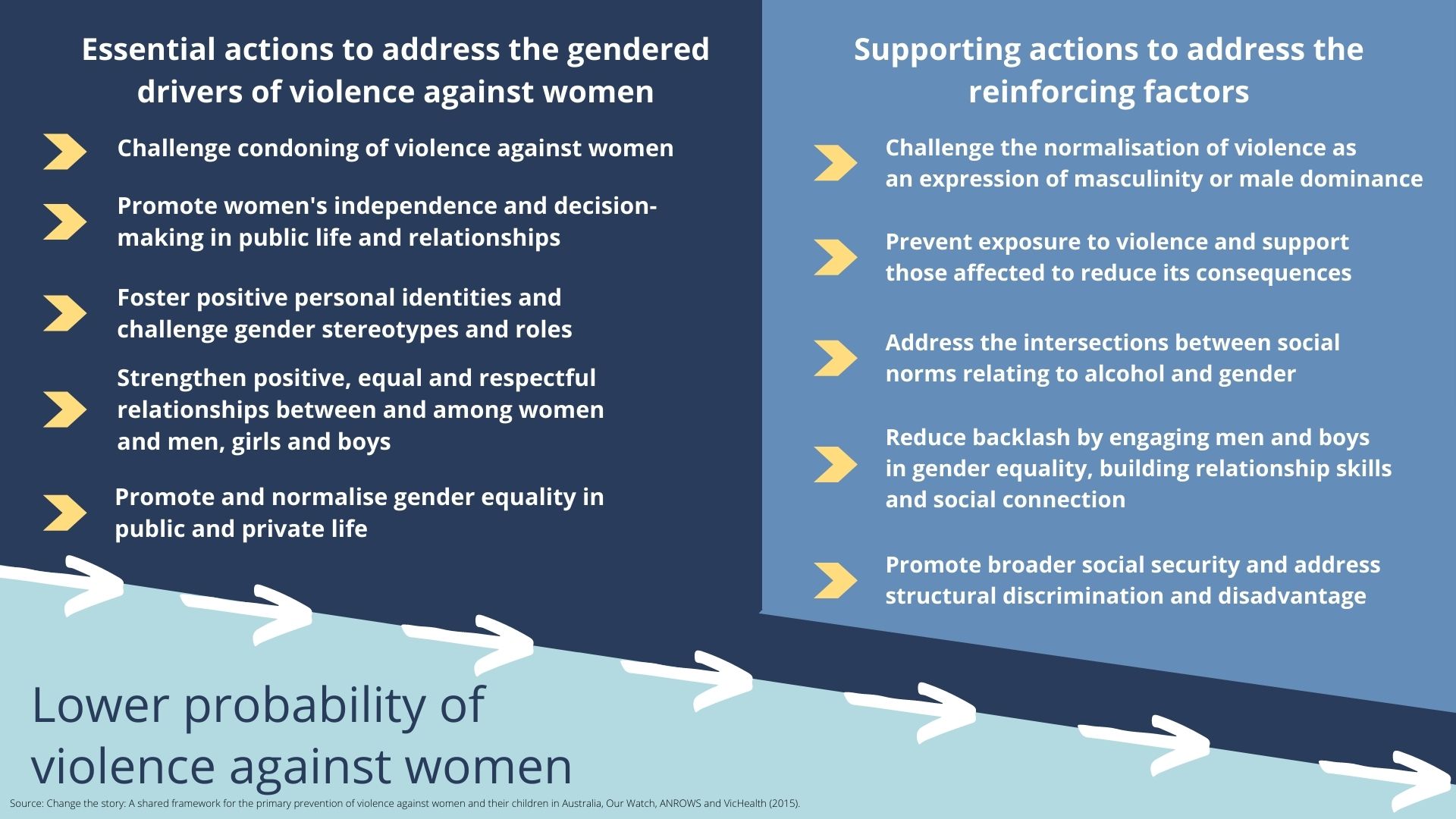How Do We Prevent Violence Against Women?
International evidence shows us that countries with higher levels of gender equality have lower rates of violence against women.
To prevent violence against women, we must undertake key, mutually reinforcing actions that address the drivers of violence, across priority settings, using proven and promising techniques and tailored to the context and needs of different groups, so that we can reach everyone.
The five essential and five supporting actions together address the factors that drive or reinforce violence against women and thus lower the probability of it occurring:

No one organisation can undertake all the actions, but everyone can contribute – in appropriate and and context-specific ways, separately or in partnership. This way the actions reach everyone and are mutually-reinforcing across different settings, to “make change stick”.
- Arts
- Education and care settings for children and young people
- Faith-based contexts
- Health, family and community services
- Legal, justice and correctional services and contexts
- Local government
- Media
- Sports, recreation, social and leisure spaces
- Popular culture, advertising and entertainment
- Public spaces, transport, infrastructure and facilities
- Universities, TAFEs and other tertiary education institutions
- Workplaces, corporations and employee organisations

Direct participation programs
These programs provide participants with the skills and confidence to examine their own beliefs and behaviours and to adopt ones that are more supportive of respect and gender equality.
Direct participation programs are more effective when implemented as part of broader organisational change processes, such as those in schools, workplaces or collectives.
Organisational development
Orgnisational development involves promoting positive organisational structures and cultures, based on respect and equality between women and men. It can include a large range of actions depending on the context and the resources available.
Because of the influence that workplaces can have on the wider community, these activities can have a significant impact.
Community mobilisation and strengthening
Community mobilisation and strengthening is the process of engaging communities as individuals or groups, to identify their problems and propose the solutions.
A participatory approach seeks to engage community in the design and implementation of initiatives that reflect their identified needs and priorities.
Community mobilisation can be an important technique to include marginalised communities that are often denied a voice in decision-making.
Campaigns and social marketing
Campaigns and social marketing can be used to raise awareness of violence against women and challenge harmful attitudes and behaviours. A variety of media and popular entertainment channels can be used, including television, radio, print, online media and social media.
Strategies should be based on rigorous research and testing with relevant audiences to ensure effectiveness and avoid unintended consequences, such as reinforcing stereotypes. They should have simple and consistent key messages, with tailored messages for specific target
audiences.
Experience from communications initiatives on other topics show that communications, alone, have limited impact, but can be powerful when undertaken as part of broader, multi-technique campaigns.
Civil society advocacy
Civil society advocacy involves building and supporting social movements that encourage governments, organisations, corporations and communities to take action to prevent violence against women.
Evidence shows that civil society advocacy is essential to long-term and effective policy development for preventing violence against women.
This work should always be done using a strengths-based approach that draws on the existing knowledge and skills of women’s organisations around the country.


